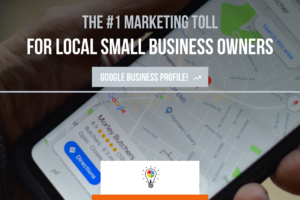
SEO Secrets: Understanding User Intent
- Categories Blog
Do You Know Why People Are Searching for Your Content
Do you know why people are searching for the content you offer? Before you get started creating an effective SEO strategy, you need to gain an understanding of the intent behind the search. It will help you choose the right keywords for your content so that the people who need it can find it.
Do You Know Why People Are Searching for Your Content
What Solution Does Your Content Offer?
People search for content and products online to find solutions to their problems. Informational blog posts and other content offer solutions to problems, or at least some relief. If you can understand your target audience’s issues and pain points, you will choose better keywords, directing potential customers to your solution.
How well do you know your target audience? If you haven’t done so already, you should create an ideal customer profile to help you better understand their needs. This will also help you choose strong keywords.
What Questions Are Users Asking?
Another way to brainstorm keywords is to think about what questions your target audience is asking that would lead them to your content. In fact, you can use these actual questions as long-tail keywords, as long as you can work them naturally into your content.
You can also get ideas by looking at questions people are asking in your niche on Q&A sites like Quora or on social media. Also, think back to questions people have asked you in the past that you’ve answered directly.
as survived not only five centuries, but also the leap into electronic typesetting, remaining essentially unchanged. It was popularised in the 1960s with the release of Letraset sheets containing Lorem Ipsum passages, and more recently with desktop publishing software like Aldus PageMaker including versions of Lorem Ipsum.
It is a long established fact that a reader will be distracted by the readable content of a page when looking at its layout. The point of using Lorem Ipsum is that it has a more-or-less normal distribution of letters, as opposed to using ‘Content here, content here’, making it look like readable English.
Many desktop publishing packages and web page editors now use Lorem Ipsum as their default model text, and a search for ‘lorem ipsum’ will uncover many web sites still in their infancy. Various versions have evolved over the years, sometimes by accident, sometimes on purpose (injected humour and the like).
There are many variations of passages of Lorem Ipsum available, but the majority have suffered alteration in some form, by injected humour, or randomised words which don’t look even slightly believable.
If you are going to use a passage of Lorem Ipsum, you need to be sure there isn’t anything embarrassing hidden in the middle of text. All the Lorem Ipsum generators on the Internet tend to repeat predefined chunks as necessary, making this the first true generator on the Internet.
It uses a dictionary of over 200 Latin words, combined with a handful of model sentence structures, to generate Lorem Ipsum which looks reasonable. The generated Lorem Ipsum is therefore always free from repetition, injected humour, or non-characteristic words etc.
The standard chunk of Lorem Ipsum used since the 1500s is reproduced below for those interested. Sections 1.10.32 and 1.10.33 from “de Finibus Bonorum et Malorum” by Cicero are also reproduced in their exact original form, accompanied by English versions from the 1914 translation by H. Rackham.
Keyword Research Can Help
A little keyword research can go a long way in understanding the intent of your website visitors. You can use a free SEO keyword tool or do some research with Google’s search function. Enter an idea into the search bar and see what relevant searches come up. These can give you ideas about the content people are searching for.
Matching Visitor Intent with Your SEO
Once you understand why people are visiting your site, it’s time to choose keywords that will get them there. Choose relevant long-tail keywords to use naturally in your content and in your meta data. Long-tail keywords are the best to use because they have low competition. There are relatively few other businesses trying to rank for these keywords, which means you have a greater chance of ranking for them. They’re also more specific and targeted.
Are Your Visitors Finding What They’re After?
Learning SEO is largely a matter of trial and error. Once you have your keywords, and have put in them in the right places, you’ll monitor your results and make changes as necessary.
How do you know whether you’ve successfully matched visitor intent with the content of your site? You’ll see it in your search rankings and analytics. Your ranking will steadily climb and your site analytics will tell you what keywords are bringing people to your site, and how long they’re staying. If people are leaving soon after they visit your site, this tells you your content is not meeting their expectations.
It’s not difficult to do your own SEO. It just takes some planning, a bit of work on the backend, some trial and error, and a little patience and soon you’ll start to see your traffic grow.
At the core of any effective SEO strategy is strong keywords. Keywords are search terms people use to find content online. You can quickly and easily grow your online traffic if you choose relevant keywords with high search volume and low competition. But there’s more to SEO than just these search terms.
True Value
In addition to any SEO work you do on the backend, your content also has to offer real value to visitors. If not, they’ll bounce away and this will hurt your SEO. If it offers value, people will stay and read, and this will help your SEO.
True value means that it solves a problem your audience faces, or at least provides significant relief. It should teach the visitor something they can use to make a change in their life and get results. Each piece of content should help your audience in some way.
Good User Experience
One of the major factors Google considers when indexing sites is user experience. This means that your site is easy to navigate and use. People stay on it and consume its content.
You can create a good user experience by keeping your site clean and uncluttered. Break up text with images wherever you can so that it’s visually appealing. Create navigation that’s easy to use between pages.
Fresh Content on a Regular Basis
Google likes sites where there is new content posted on a regular basis. If you’re going to drive traffic to your blog, you need to commit to it. Create a regular blogging schedule and post regularly. Start an idea file and comb the internet for questions people are asking and information they’re looking for. Blog posts can be just 300-500 words and written in casual language, so get into the routine of producing them quickly.
You can boost a static site’s SEO by adding a blog to it. If you have a company site, add a blog page you can keep updating with new content, and this will provide SEO benefits for the entire site.
Backlinks from Authority Sites
Get links back to your site from relevant authority sites in your niche. This takes a bit of creativity and work, but a few good backlinks can make a huge difference. Look for sites that are already popular and get lots of traffic from Google. Use strategies like posting on directories and guest blogging.
The Test of Time
One simple thing that will help your SEO is the passing of time. Google favors sites that are well-established. As you employ SEO strategies and add new content to your site, you should see traffic steadily grow.
Should you focus on finding and using the right keywords? The answer is yes. Keywords help you grow traffic and bring the right people to your site. But keep in mind the other elements of SEO so that you can create a sustainable SEO strategy.
Contact Us for Your SEO Needs!
You may also like

The Impact of a Small Business Marketing Consultant!

Google Business Profile: Essential for Local Success!

